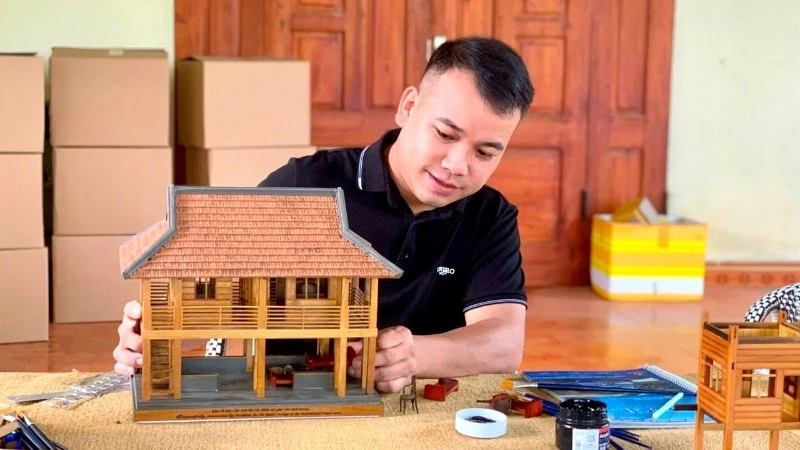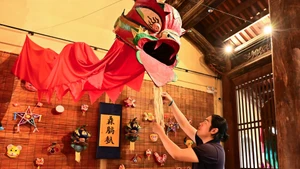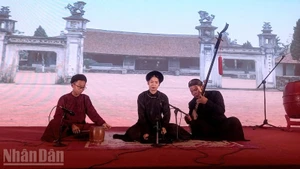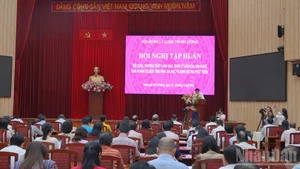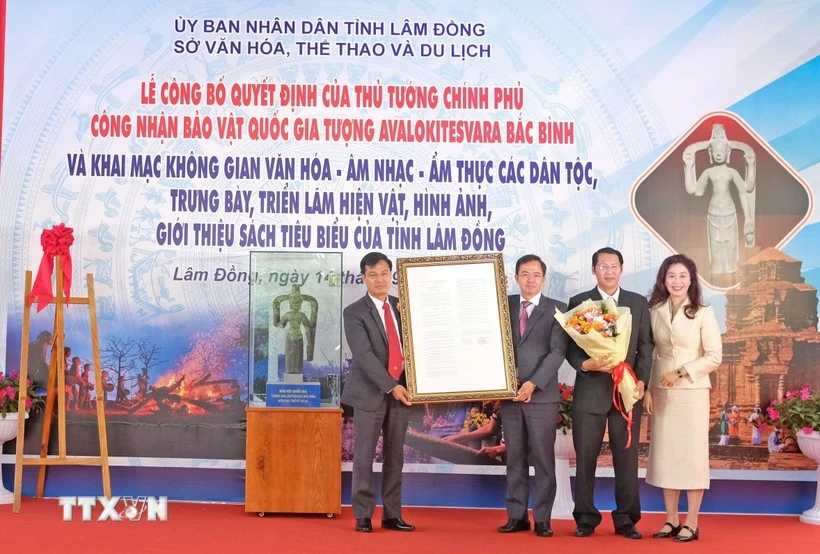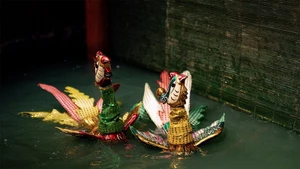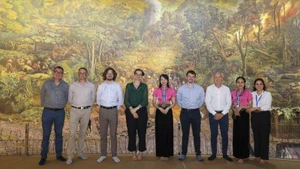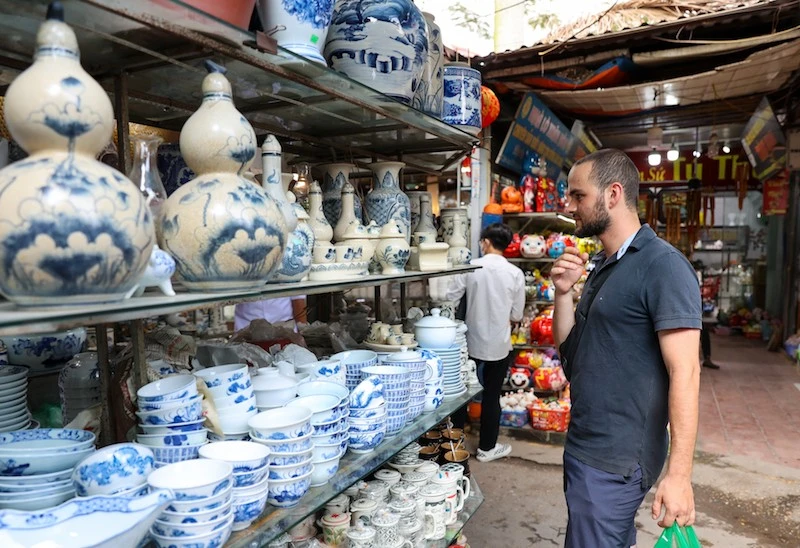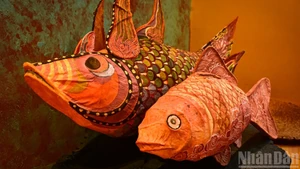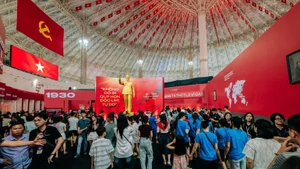Few people know that these models are created by the skilful hands of Luong Ngoc Tu, a young Tay ethnic man who is passionate about preserving stilt house culture through miniature replicas.
Growing up in a stilt house in Tan Thanh Hamlet, Than Sa Commune, Thai Nguyen Province, Tu often accompanied his father to help build houses for local villagers. This nurtured in him a natural love for stilt houses. As a student in secondary and high school, Tu, born in 1989, began experimenting with making simple miniature models for display at school and community fairs, treating it as a personal hobby.
After finishing high school, while studying away from home, Tu’s longing for his stilt house deepened his passion for model-making. Once he learned to read architectural drawings, his work became more refined and lifelike. Not only did he replicate the structures of Viet Bac stilt houses — rafters, pillars, doors, rooms, stairways, ancestral altars, and hearths — at near-accurate scale, but he also breathed life into them by adding vivid details such as water jars in front of the house or buffalo and cows sheltered beneath the floor.
When he posted his models on his personal fan page, Tu was surprised to receive enthusiastic praise from the community. At that time, he had no thoughts of making money from his hobby. It was only when his garment workshop struggled during the COVID-19 pandemic and he began receiving inquiries about purchasing the models that Tu decided to turn his passion into full-time work. He realised he needed to invest even more effort into improving both the aesthetic and durability of his creations.
Tu began sourcing high-quality small wooden pieces from carpentry workshops and investing in machinery — customising saws, cutters, and planers capable of producing the tiny, smooth details he needed. He sought out suppliers able to make miniature terracotta roof tiles or decorative items from custom moulds, and he experimented with paint-mixing techniques to achieve the most realistic and satisfying colours.
Although the materials themselves were inexpensive, creating a satisfactory model required meticulous planning and patience — from drafting blueprints and building the frame to assembling details, decorating, and applying finishes. Every piece is entirely handcrafted, like a “spiritual child” that Tu shapes and nurtures with care.
According to Tu, depending on size and complexity, each model takes from one week to a month to complete. To date, he has produced thousands of miniature stilt houses. The more he works, the greater his love and appreciation grow, especially as traditional stilt houses are gradually disappearing.
Tu emphasised that beyond dexterity and patience, creators must have cultural knowledge to faithfully capture the spirit and uniqueness of stilt houses from different ethnic groups and regions. “This work allows me to broaden my understanding of stilt house culture, and in doing so, helps preserve and spread it through these miniature models,” he shared.
Among the roughly 40 custom designs he has made, Tu feels the deepest attachment to the model of President Ho Chi Minh’s stilt house at the Presidential Palace relic site. Several years ago, relying only on drawings and videos found online, he created his first miniature versions. But only after visiting the actual house in Ha Noi, where President Ho Chi Minh lived and worked during the final 11 years of his life (1958–1969), was he stirred by strong emotions to create a new version that was more authentic and refined, down to the smallest details, from the desk where the great president worked to the bed where he rested.
“Each time I make a model of Uncle Ho’s stilt house, I recall stories about him, picture his image, and try to convey those emotions into the product,” Tu said. In addition to the 1:35 scale model made as a souvenir for the Ho Chi Minh Relic Site, Tu has crafted larger models for schools, organisations, and enterprises. Beyond the stilt house, he has also created models of Nha Rong Wharf, President Ho Chi Minh’s Mausoleum, and his simple jungle shack at the ATK base, helping institutions recreate spaces tied to Ho Chi Minh’s legacy.
Today, as orders increase, Tu is also providing livelihoods for several local residents who share ties to stilt house culture, involving them in parts of the production process. In this way, he is not only creating income for ethnic minority communities in mountainous areas but also contributing to preserving and sustaining the stilt house tradition - a unique cultural identity of many Vietnamese ethnic groups.
